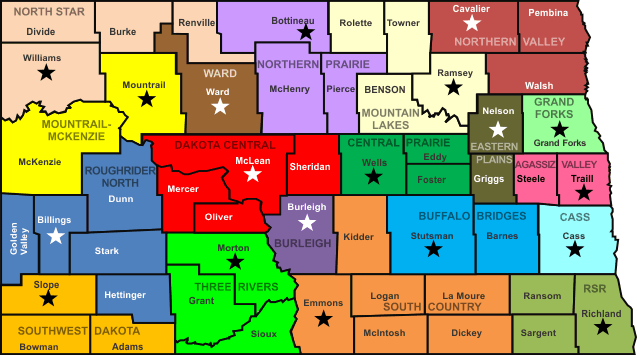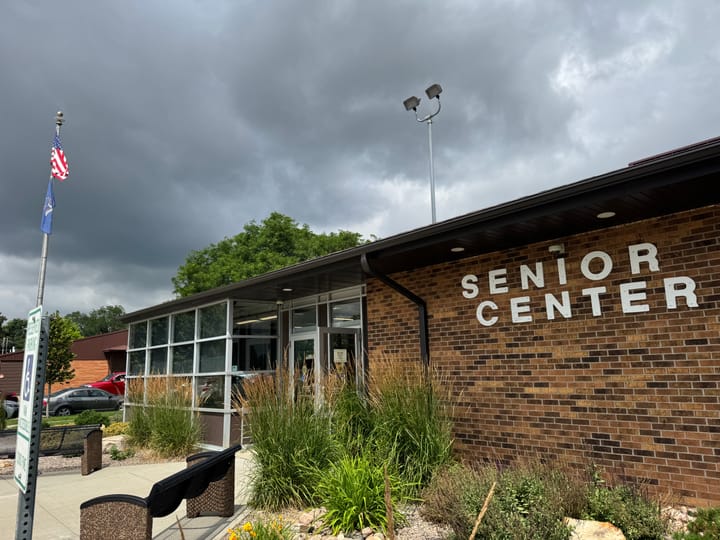Burnout hits child protection and family services workers
Turnover tops 64 percent in two human service zones in 2022

Investigating allegations of child abuse or neglect is hardly ever a simple job. Parents suspected of real cases of abuse often dodge child protective services workers when they knock on the door, state social workers say.
Parents change residences, skip town, jump borders, and try to become invisible. Tracking them down and protecting the welfare of children in the state takes time and boots on the ground.
For Rhonda Allery, director of the Mountain Lakes Human Service Zone serving Benson, Ramsey, Rolette and Towner counties in north central North Dakota, that job has become even more complicated over the past year. With a 64 percent turnover rate, the Mountain Lakes zone hemorrhaged social worker staff in 2022.
Even with offers of $10,000 sign-on bonuses, it can be hard to recruit social workers to the area. High rates of poverty and addiction in the zone, combined with the relatively low-paying starting salary, hazardous and variable working conditions, haven’t attracted many applicants.
With three child protective service and three foster care positions open, the zone is dangerously short staffed and often must call on other zones to help pick up the slack. That means increased hours of “windshield time” for social workers driving from other zones, taxing them as well.
“It’s goddamned hard work. It’s very hard work” Allery said. “These are the only people in North Dakota who are consistently going into homes and making home visits and talking to people about really difficult things. And they’re probably the lowest paid.”
Starting pay for a full-time child protection worker in Dickinson, for example, ranges from $5,000 to $5,200 per month while in Grafton the same position was recently advertised as paying between $4,780-$8,600 per month, according to recent listings on the Team ND job site.
Similar turnover occurred in Cass County, where caseloads and staff numbers are higher but cases are just as complicated. Cass had a 64 percent turnover in its human service zone while the state as a whole saw 37 percent turnover in 2022, according to Department of Health and Human Services [DHHS] data.
Overall, the state needs 16 more child protective services staff and 20 more case managers just to get to a fully staffed status, according to Cory Pedersen, director of Children and Family Services at the DHHS.
While some zones in the state are well-staffed and addressing their cases in a timely manner, others like Mountain Lakes and Cass are struggling because of the higher caseloads. Higher caseloads lead to burnout. Burnout leads to retention problems. Loss of staff leads to slower responses on cases.
Generally, child protective services can manage around 10-12 cases at a time and foster care workers 14-18 cases, Pedersen said.
“We don’t have the workforce where we need them all the time,” Pedersen said. “If Cass gets an influx of 50 cases in a week, we do not have the workforce we need in Cass and would have to shift people over.”
The four child protective services workers currently in the Mountain Lakes zone process an average of 60 cases per month, or around 15 cases per worker. Without adding staff, delays in response time could increase.
Under scrutiny
That turnover comes at a time when the Department of Health and Human Services is under greater scrutiny for slow response to allegations of child abuse and neglect.
An audit from the Office of the State Auditor released last August reviewing 60 cases found response times averaged 13 days in cases where contact with children is required within 24 hours. Audits in 2017 and 2019 showed a similar pattern.
Agassiz Valley zone director Kim Jacobson said the audit “unfortunately painted a picture that we were not responsive” without detailing what social workers in the zones deal with on a daily basis.
“We often have a hard time tracking down families, once they kind of think child protective services might be on to them,” Jacobson said. “Oftentimes, they become transient, if they aren't already transient in nature.”
The audit only showed whether there was a pass or a fail, Allery said, without detailing what went into each investigation.
Such an audit wouldn’t reveal the caseworker who drove 70 or 80 miles and checked out seven different homes, said Allery, using a fictitious situation, in order to track down “the meth addicted mom with an infant we didn’t think was safe.”
State Auditor Josh Gallion, who spearheaded the report, said he believed “positive outcomes” have occurred since the audit, including a focus on developing plans to attract and retain more workers.
“I hope that [DHHS] can be there to support these people who are experiencing horrible circumstances,” Gallion said. “Because yeah, we’re going to wind up burning them out, we’re going to lose people. This is going to be a never-ending cycle until something changes.”
Recruit and retain
Currently the Senate Human Services Committee is engaged in a study on equity in pay and benefits that should inform recommendations for how to better manage staffing issues, with steps taken to patch any problematic areas and possibly better attract workers, according to Chris Jones, commissioner of the DHHS.
Even though the state has moved to a system of human services zones since 2019, pay and benefits are not on an even level across the state since social workers are technically employed at the county level.
“Some counties paid a lot, some counties paid very little, and the state was right in the middle, and there are different benefits packages,” Jones said. “We want to be able to give the legislature as good of a number as we can so that they understand where that compensation and equity gap is.”
To deal with shortfalls, the DHHS is also working to form a rapid response team of four members that can be deployed on short notice to assist areas that are struggling. So if caseloads become too heavy in one area, this team could assist in resolving certain lower-level cases to let the local area concentrate on the highest priority ones, Pedersen explained.
“There are only so many social workers in the state,” Jones said. “We hire some, counties hire some, schools hire some, nonprofits hire some. There’s a finite number of bodies.”
In 2022, the state confirmed 1,155 cases of abuse or neglect, reviewed another 1,907 cases where no abuse or neglect was found after a full assessment, and partially reviewed 3,156 cases and found no abuse or neglect. Another 11,431 cases – or around 64 percent -- were reported but not investigated further since allegations were insufficient.
Christen Olson, a program lead at the Agassiz Valley Human Service Zone who recently moved from the Mountain Lakes zone, said more focus needs to be made specifically on areas where recruiting is hardest and community health is an issue.
“When a community isn’t well, or in extreme poverty, or has limited resources, that increases the risk you might encounter and increases the severity of the cases,” she said.
Jacobson said workplace culture, support for team members, and reducing caseload is important for addressing burnout. The severity of cases, the emotional toll, and the requirement to be constantly available does factor in.
“Most emergencies don't happen between eight and five o’clock. Most emergencies happen on Christmas Eve, on Christmas morning, on Friday afternoon, or at two in the morning,” Jacobson said. “Dispatch will call and say law enforcement needs backup, and you get in your car, and you go – any hour, any day, any night, any weather condition.”
The North Dakota News Cooperative is a nonprofit news organization providing reliable and independent reporting on issues and events that impact the lives of North Dakotans. The organization increases the public’s access to quality journalism and advances news literacy across the state. For more information about NDNC or to make a charitable contribution, please visit newscoopnd.org. Send comments, suggestions or tips to michael@newscoopnd.org. Follow us on Twitter: https://twitter.com/NDNewsCoop.



